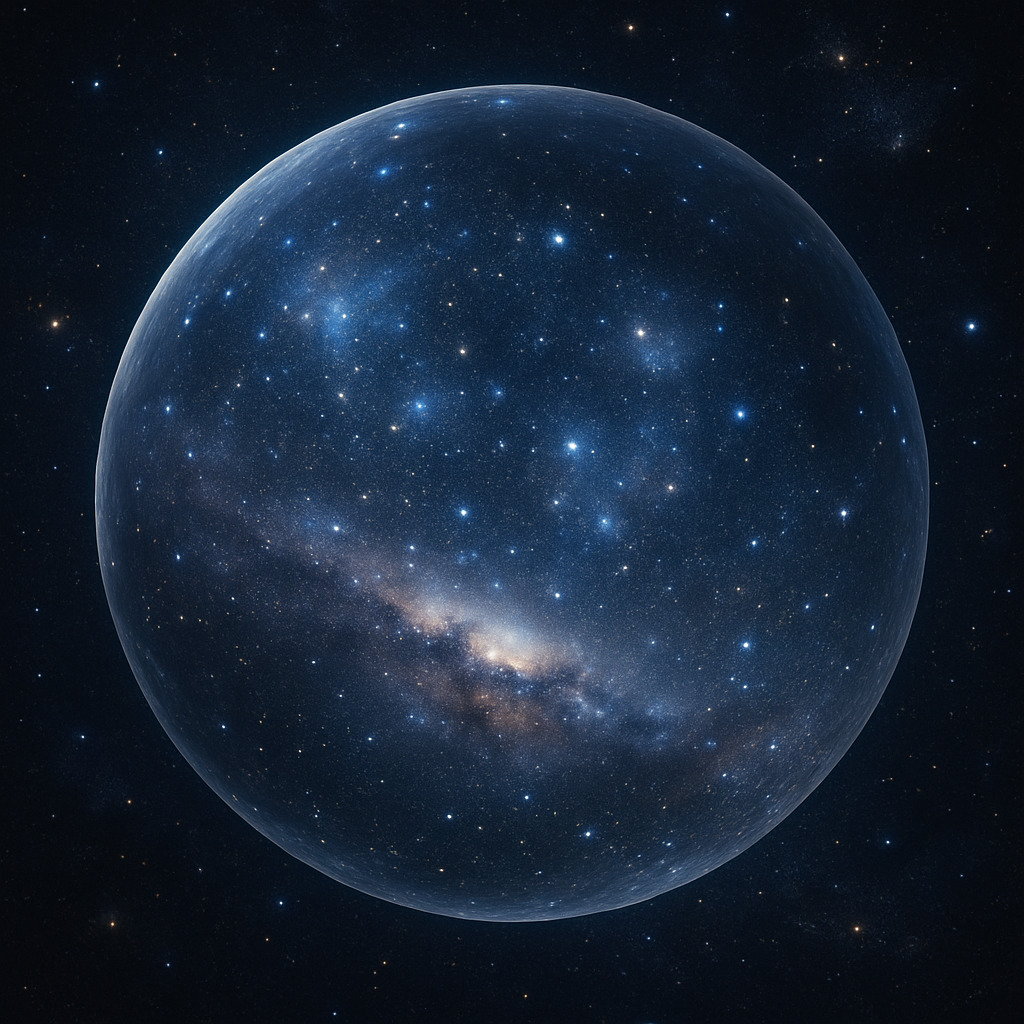🌌 Where Does the Universe End? The Truth About Its Edges: The Human Trap of Geometry
When we picture the universe, our brains reach for familiar shapes — a sphere, a bubble, something with a center and a border. A place where everything began and perhaps where everything ends. It’s the childhood drawing of the cosmos: a big balloon floating in space, with stars inside and the unknown outside.
But that image is deeply misleading. Not because the universe has no shape — it does — but because our brains are not wired to grasp its true geometry.
The Center of the Universe Doesn’t Exist — and Neither Does an Edge
Imagine drawing dots on the surface of a deflated balloon. Now inflate it. The dots move away from one another, not because they’re moving, but because space itself is expanding. None of those dots is at the center of the expansion. In fact, the center is outside the surface — in a dimension the dots can’t perceive.
We are those dots. We live on the surface of a space that is stretching, with no central point and no outside for the universe to expand into. The universe is not expanding into anything — space itself is growing.
So... Is There an Edge of the Universe?
No. Or at least, not in any conventional sense. There is no invisible wall marking the edge of space. Instead, the universe might be:
- Finite but unbounded, like the surface of Earth — you can travel forever without hitting a wall.
- Infinite, with no overall curvature — going on endlessly in all directions (even if we can’t observe it all).
What we call the observable universe does have a limit. But that limit is just how far light has been able to travel since the Big Bang — not a physical border. Beyond that, we simply can’t see... yet. But that doesn’t mean there’s nothing beyond it.
The Myth of “Outside” and the Wrong Question
Asking “what’s outside the universe?” is like asking “what’s north of the North Pole?”. It’s an attractive question, but a meaningless one. Space and time began with the Big Bang. There is no “before” or “outside” in any meaningful physical sense.
A Universe Expanding Everywhere, Not from Somewhere
Another common mistake is to picture the Big Bang as an explosion from a specific place, like a firecracker in the dark. But the Big Bang didn’t happen in space — it happened to space.
Every point in the universe is moving away from every other point. If you lived in a galaxy billions of light-years away, you’d see the same thing we see: all galaxies moving apart.
There is no center of the universe... because every point is the center.
Accepting the Incomprehensible
Thinking about the edges of the universe makes us uneasy because it forces us to confront our cognitive limits. We’re not built to visualize curved space-time or the absence of a physical boundary. And yet, that’s the beauty of cosmology: it pushes us to expand our imagination, just as space itself expands.
The universe has no edge as we usually think of it. But in trying to understand it, we may find ourselves crossing our own inner borders.








Leave a Comment